Fever Tree Bonsai!
Hey everyone, what an incredible tree a fever tree is one of my favourites indeed. The fever tree has a really interesting story too.
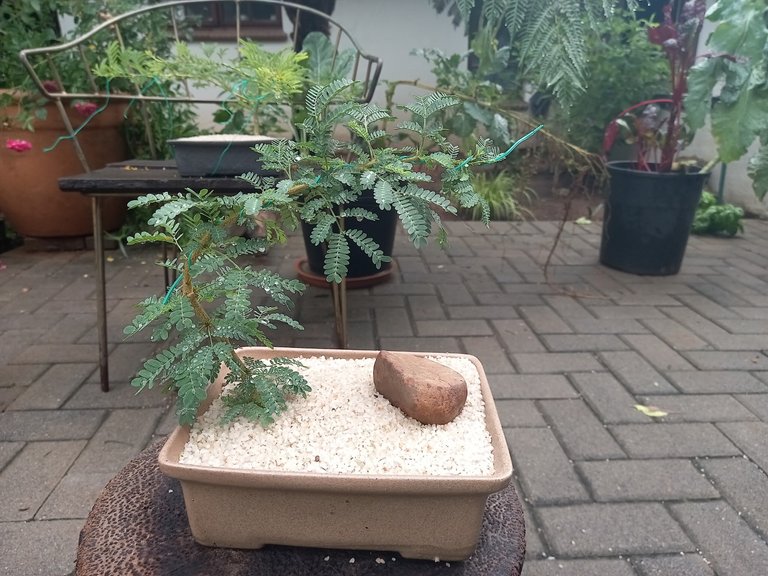
As per google.com
The fever tree gets its common name from pioneers who believed that the tree caused fevers. In fact the fever was actually malaria which they caught from mosquitoes that bred in the swampy fever tree habitat.
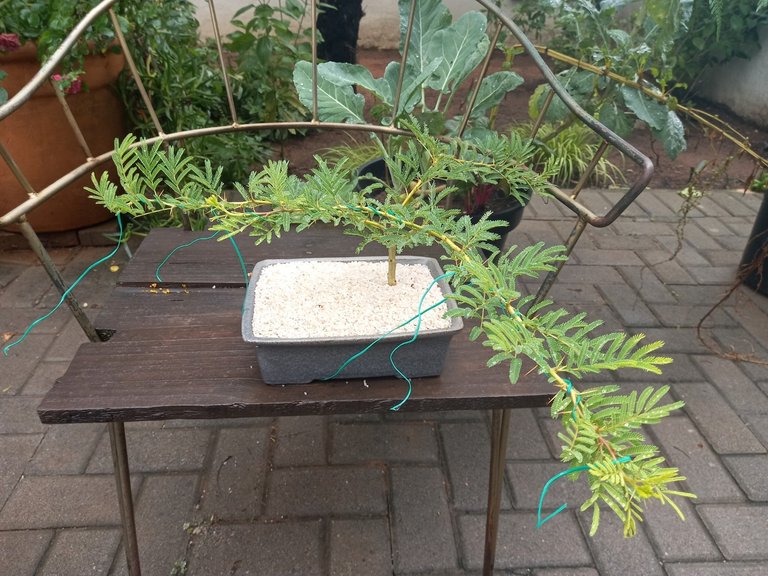
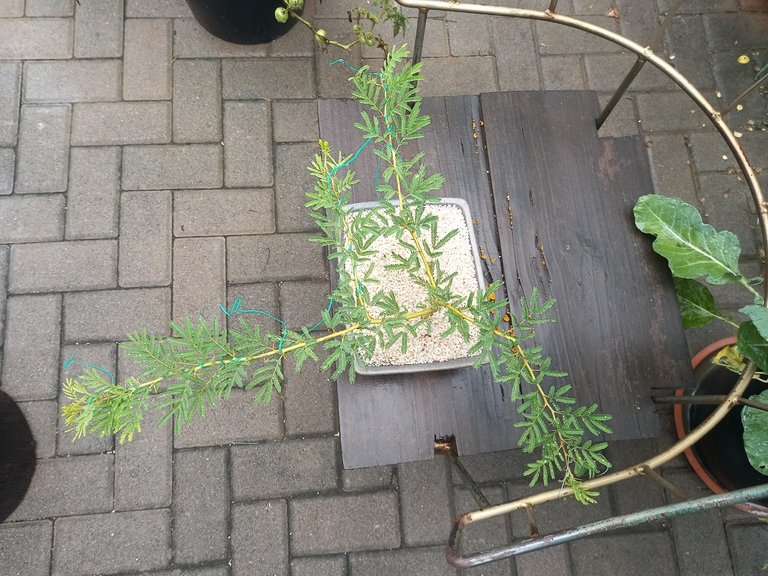
What I love so much about the fever tree as a bonsai is not only that it grows fast, but you are able to shape it just how you wish which is rather nice. This I am growing flat and low which should look really interesting indeed I feel!
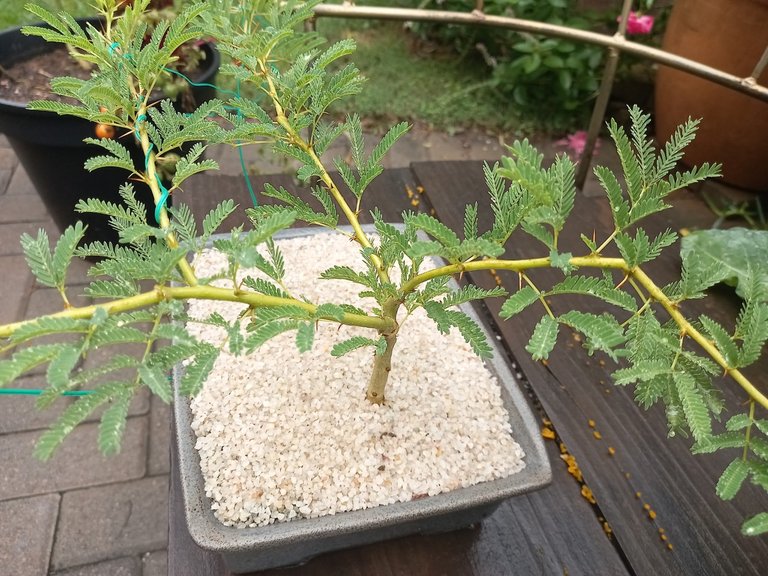
More here as per wikipedia.org
Vachellia xanthophloea
From Wikipedia, the free encyclopedia
(Redirected from Fever tree)
Jump to navigationJump to search
"Fever tree" redirects here. For other uses, see Fever tree (disambiguation).
Fever tree
Ngorongoro Acacia xanthophloea.jpg
Scientific classificationedit
Kingdom: Plantae
Clade: Tracheophytes
Clade: Angiosperms
Clade: Eudicots
Clade: Rosids
Order: Fabales
Family: Fabaceae
Clade: Mimosoideae
Genus: Vachellia
Species: V. xanthophloea
Binomial name
Vachellia xanthophloea
(Benth.) P.J.H.Hurter[1]
Synonyms
Acacia xanthophloea Benth.
Vachellia xanthophloea is a tree in the family Fabaceae, commonly known in English as the fever tree.[2] This species of Vachellia is native to eastern and southern Africa (Botswana, Kenya, Malawi, Mozambique, Somalia, South Africa, Eswatini, Tanzania, Zambia, Zimbabwe). It has also become a landscape tree in other warm climates, outside of its natural range.
Contents
1 Description
2 Etymology
3 Ecology
4 Other uses
5 Invasive species
6 In popular culture
7 Shamanic usage
8 Gallery
9 Notes and references
10 Bibliography
11 External links
Description
The trees grow to a height of 15–25 m (49–82 ft). The characteristic bark is smooth, powdery and greenish yellow, although new twigs are purple, flaking later to reveal the characteristic yellow.[3] It is one of the few trees where photosynthesis takes place in the bark. Straight, white spines grow from the branch nodes in pairs. The leaves are twice compound, with small leaflets (8 mm × 2 mm (0.3 in × 0.1 in)). The flowers are produced in scented pale cream spherical inflorescences, clustered at the nodes and towards the ends of the branches. The pale brown pods contain 5-10 elliptical, flattened green seeds and are 5–19 cm (2.0–7.5 in) long, straight, flat and rather papery, the segments are mostly longer than they are wide, often breaking up to form small clusters of segments each containing an individual seed. As the pods mature they change colour from green to pale greyish brown.[3]
Fever trees are fast growing and short lived. They have a tendency to occur as single-aged stands, and are subject to stand-level diebacks that have been variously attributed to elephants, water tables, and synchronous senescence.[4][5][6][7]
Etymology
In KwaZulu-Natal
The name xanthophloea is derived from Greek and means "yellow bark" (ξανθός "yellow, golden"; φλοιός "bark"). The common name, fever tree, comes from its tendency to grow in swampy areas: early European settlers in the region noted that malarial fever was contracted in areas with these trees. It is now understood that malarial fever is spread by mosquitos living in the swampy areas that often support this tree species, and not by the tree species itself. This is because mosquitos often lay eggs in moist swampy areas, and they need blood to do that.[8]
Ecology
Trunk with greenish yellow bark
Vachellia xanthophloea is found growing near swamps, riverine forests or on lake shores, in semi-evergreen bush land and woodland where there is a high groundwater table. In seasonally flooded areas it often forms dense single species stands.[3]
The leaves and pods are used to provide food for livestock while the young branches and foliage are eaten by African elephants while giraffe and vervet monkeys eat the pods and leaves. The flowers are used for foraging by bees and provides favoured nesting sites for birds. Like other acacias and Fabaceae it is a nitrogen fixer, so improves soil fertility.[3] The gum is part of the diet of the Senegal bushbaby (Gallinago senegalensis) especially in the dry season.[9]
Butterflies recorded as feeding on Vachellia xanthophloea in Kenya included the Kikuyu ciliate blue (Anthene kikuyu), Pitman's hairtail (Anthene pitmani), common ciliate blue (Anthene definita), African babul blue (Azanus jesous), Victoria's bar (Cigaritis victoriae) and common zebra blue (Leptotes pirithous). In addition 30 species of larger moths have been recorded as feeding on this tree.[10]
Other uses
Fever trees lining a road near Hartbeespoort Dam in South Africa
Vachellia xanthophloea are planted next to dams and streams on farms to control soil erosion, as a live fence or hedge and in ornamental planting for shade and shelter in amenity areas. Vachellia xanthophloea is often planted as a source of firewood, but its gummy sap leaves a thick, black, tarlike residue when burnt. The valuable timber of Vachellia xanthophloea is pale reddish brown with a hard, heavy texture, and, because it is liable to crack, it should be seasoned before use. The timber is used to make poles and posts.[3]
Invasive species
Flowers
In Australia, Vachellia xanthophlea is a prohibited invasive plant in the state of Queensland under the Biosecurity Act 2014, under which it must not be given away, sold, or released into the environment without a permit. The act further requires that all sightings of Vachellia xanthophlea are to be reported to the appropriate authorities within 24 hours and that within Queensland everyone is obliged to take all reasonable and practical steps to minimise the risk of Vachellia xanthophlea spreading until they have received advice from an authorised officer. Although so far, it has only been found in a few gardens and not in the "wild".[11] It is also a "declared pest" in Western Australia.[12]
In popular culture
These trees are immortalized by Rudyard Kipling in one of his Just So Stories, "The Elephant's Child", wherein he repeatedly refers to "the great grey-green, greasy Limpopo River, all set about with fever-trees."[13]
Shamanic usage
This tree has been used for thousands of years by African tribes as a divination tool. Bark from this tree and four other herbs including Silene capensis (African dream root) and Synaptolepis kirkii are boiled into a brew. This is taken to induce lucid dreams, which they call "white paths". Before going to sleep a question is asked that will be answered in their dreams. Medicinally, the roots and a powder made from bark stripped from the trunk are used as an emetic and as a prophylactic against malaria.[3]
https://en.wikipedia.org/wiki/Vachellia_xanthophloea
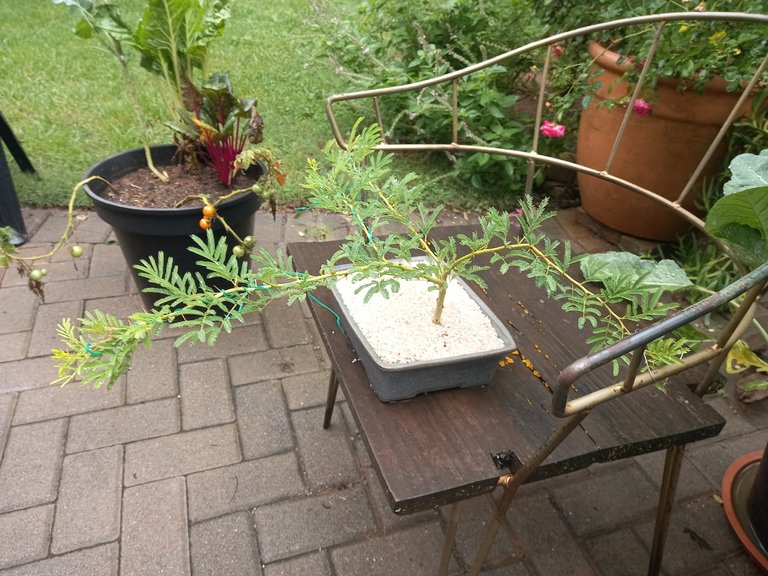
This promises to be very pretty in year or two I believe!
Nature the incredible!
May you have the most incredible weekend! Love and light, be blessed!
Cheer$:)
They are lovely. I love the delicacy of the leaves.
JOIN US ON DISCORD
SUBSCRIBE TO THE LIFESTYLE LOUNGE COMMUNITY HERE
JOIN US ON TWITTER
Hehe to true my friend long time are you well??
Agree, that does look like an ideal tree to easily shape the early branches into any direction. It has a natural alternating branch pattern, so no need to search for symmetrical branch pairs to remove. The alternating pattern is an easy guide to learn where to bend the wood.
Watch out for the thorns if you ever wire or prune it. It grows thorns under the leaves, similar to my Hawthorn tree. I always snip new thorns off before they can hurt me. Removing them might even help promote energy in the tree to focus more on growing.
If it were my tree, I think I would do the same as you, with the three branches going out like a triangle from above, except maybe more zigzag motion for each to start building up outward fans of leaves around the tree. Eventually develop an apex from a strong central shoot.